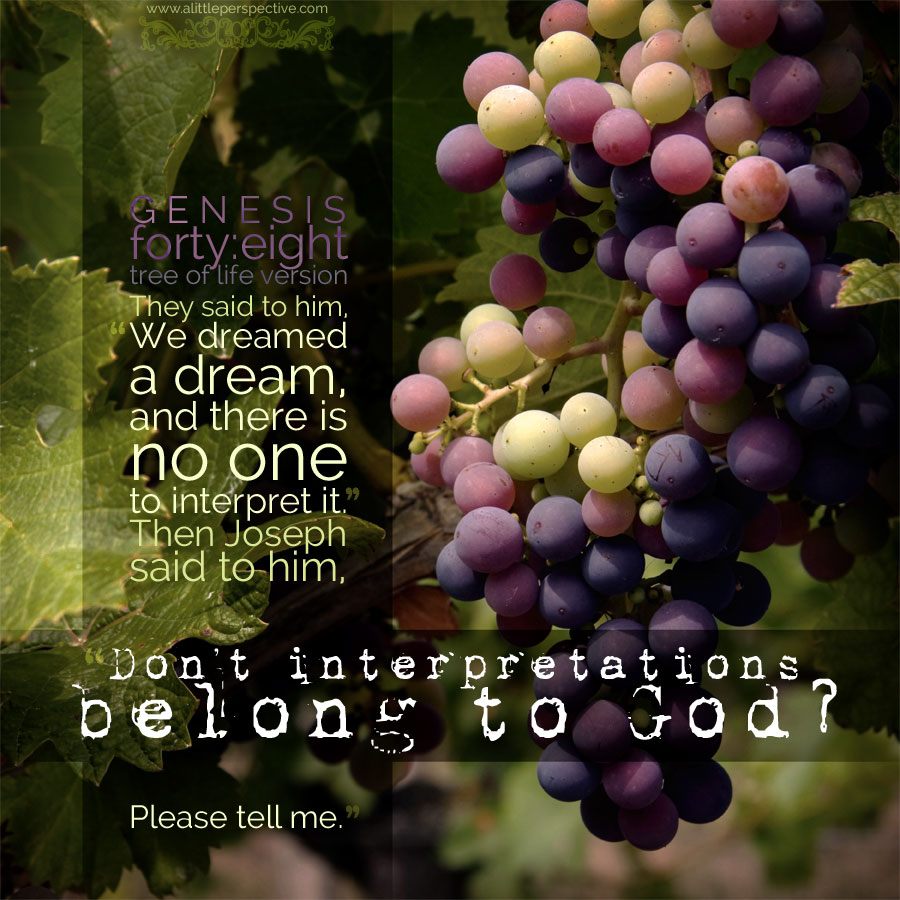Read Genesis 40:1-23 at Bible Gateway.
Hebrew paragraph division
Gen 40:1-23 {p} Joseph in prision
Gen 40:1-23 chiastic structure
Original Hebrew
And it came to pass after these things, that the butler of the king of Egypt and his baker offended their lord the king of Egypt. And Pharaoh was angry against his two officers, against the chief of the butlers, and against the chief of the bakers. Gen 40:1-2
And Joseph came in to them in the morning, and saw them, and, behold, they were sad. Gen 40:6
Offended is in Hebrew Strong’s H2398, chata, a primitive root meaning “to miss the mark.” This is the Hebrew root most often translated “sin” in English Bibles. The ancient pictographs are the chet + tet + aleph:
chet = the wall, thus outside, divide, half
tet = the basket, thus surround, contain, hold, mud
aleph = the ox head, thus strength, power, leader
The story the ancient pictographs are telling is of being outside (chet) that which contains (tet) strength, power, and wisdom in the sense of that which is necessary to lead (aleph); i.e., to miss the mark, the target which Torah defines.
Angry is in Hebrew Strong’s H7107, qatsaph, a primitive root meaning “to break, to burst.” The ancient pictographs are the quph + tsadey + pey:
quph = the sun on the horizon, thus condense, circle, time
tsadey = the trail, thus a man concealed, journey, chase, hunt
pey = the mouth, thus open, blow, scatter, edge
Quph: the sun on the horizon marks the limit of the day, or daylight, and also by extension the extremity of time, or eternity. Tsadey: when a man is hunting game along a trail, he conceals himself from his prey until he is in a position to bring it down. Pey: the mouth scatters in the sense that spit is scattered when sneezing through it, or words are scattered when speaking from it.
So the story the ancient pictographs are telling is of coming to the limit (quph) of one’s patience or self-concealment (tsadey), i.e., self-control, and breaking out into anger as the mouth scatters forth (pey) the emotion normally concealed within the heart.
Derivatives of the root include wood, splinter, thorn, wrath. The Hebrew dictionary definition of breaking or bursting is with the idea of dropping (or throwing) a clay or porcelain vessel so that it bursts into shards. Likewise when chopping wood, splinters scatter from the contact. Both shards and splinters are sharp, and when they start flying they can cause wounds for the one who is in their trajectory.
Sad is in Hebrew Strong’s H2196, zaaph, a primitive root meaning “to be vexed, sad.” The ancient pictographs are the zayin + ayin + pey:
zayin = the mattock, thus tool, weapon, food, cut, nourish
ayin = the eye, thus watch, know, shade
pey = the mouth, thus open, blow, scatter, edge
The story the ancient pictographs are telling is that when a weapon or a threat (zayin) is perceived or seen (ayin), the body responds with involuntary opening (pey). So derivative words indicate trembling (increased respiration through an opened mouth), sweating (through opened pores), and even losing one’s bladder or bowels because of terror. I believe the ancient Hebrew of zaaph indicates a stronger and more traumatic emotion than sadness.

















Leave a Reply